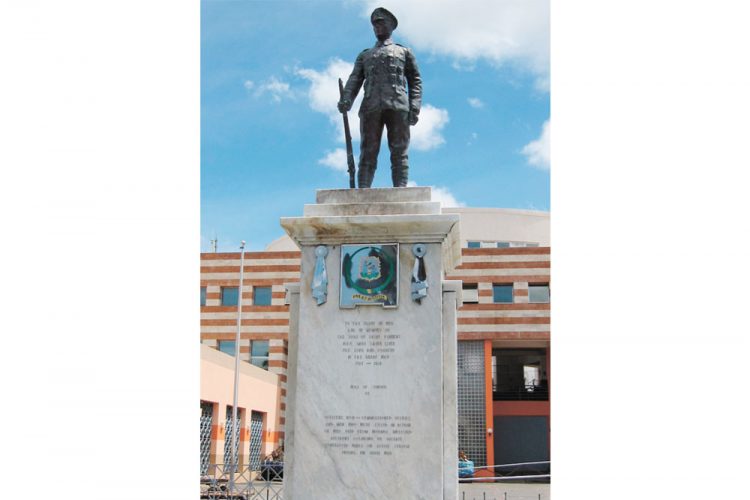The ‘Iron Man’ and the end of World War 1– A brief historical note

On November 21, 1918, a notice in the Gazette informed the public about the signing of the armistice signalling the end of World War 1. Christmas of 1918 was therefore one to behold. The Times newspaper stated that for an island of its size St.Vincent had given more men to the British West Indian regiment than any other and went on to indicate that “a large percentage of those sent from other colonies were Vincentian born”. The last ship with men returning from the front landed in August.
The treaty of peace was concluded on June 28, 1919 and Saturday, July 19, was declared the official day for celebrations. Stores were to remain open for public convenience. Friday the 24th and Saturday the 25th were given as public holidays. On the day of the official celebrations ‘peace bonfires’ were lit at 8 p.m. at different points from Fancy to Union Island. On July 24, ‘invalidated’ soldiers were given five shillings and the ‘destitute poor’ two shillings; a special meal to inmates of the Thompson Home and patients from the main hospital, the Leper ‘Asylum’ and Yaws hospital and to prisoners. Scheduled also was a parade of local forces and returned soldiers at the Victoria Park, then a procession of school children. Schools in Kingstown, Questelles, Lowmans and Sion Hill were entertained at the Court House. A meal was given to the poor of the district. A sports programme at the Victoria Park followed the next day. A captured German machine gun was at some point placed at the Carnegie Free Library. It would appear that despite the pomp and glory the soldiers that had returned did not get what they considered a fair deal. A letter of July 31 from Lance Corporal D. H Lampkin of Coull’s Hill asked for a square deal for returned soldiers, “for if you were to think seriously of what they have done you would treat them a lot better”.
A meeting at the Court House led to the appointment of a committee to undertake the task of preparing a suitable memorial to commemorate those who had sacrificed their lives. A decision was finally made for a monument at the Market Square in the area that held the stock drinking trough. Cost became a major factor and so for about five years very little happened until the Administrator in 1924 felt that it could no longer be delayed. The work by an English company was of a “Cornish granite pedestal memorial on steps, surmounted by the bronze figure of a soldier”.
The overall height was 16 feet and the bronze figure 6 feet 3 inches. The Roll of Honour was compiled by F. W Reeves, headmaster of the Grammar School. The numbers to be listed had to be updated to consider those who had died since their return from war connected illnesses. The numbers were listed as 10 NCOs and 51 privates. The government contributed £250, with £240 from public appeal and £25 from the Town Board. The material arrived in 23 cases and was assembled with the necessary finishing touches done. Foreman Ross was to be given a small allowance and allowed entrance to the enclosure, most likely for the official unveiling.
The ceremony took place on November 11, 1925. Administrator Walter considered it a matter of pride and honour to be given the privilege of unveiling the monument. It was then handed over to the Chairman of the Kingstown Board. The War Memorial, affectionately known as the ‘Iron Man’, served as a meeting place for people who journeyed into Kingstown from the country areas. The construction of the market led to its removal from its original site. Perhaps there was then no need for people from the country to reconnect at the ‘Iron Man’.
Dr Adrian Fraser is a social commentator and historian









